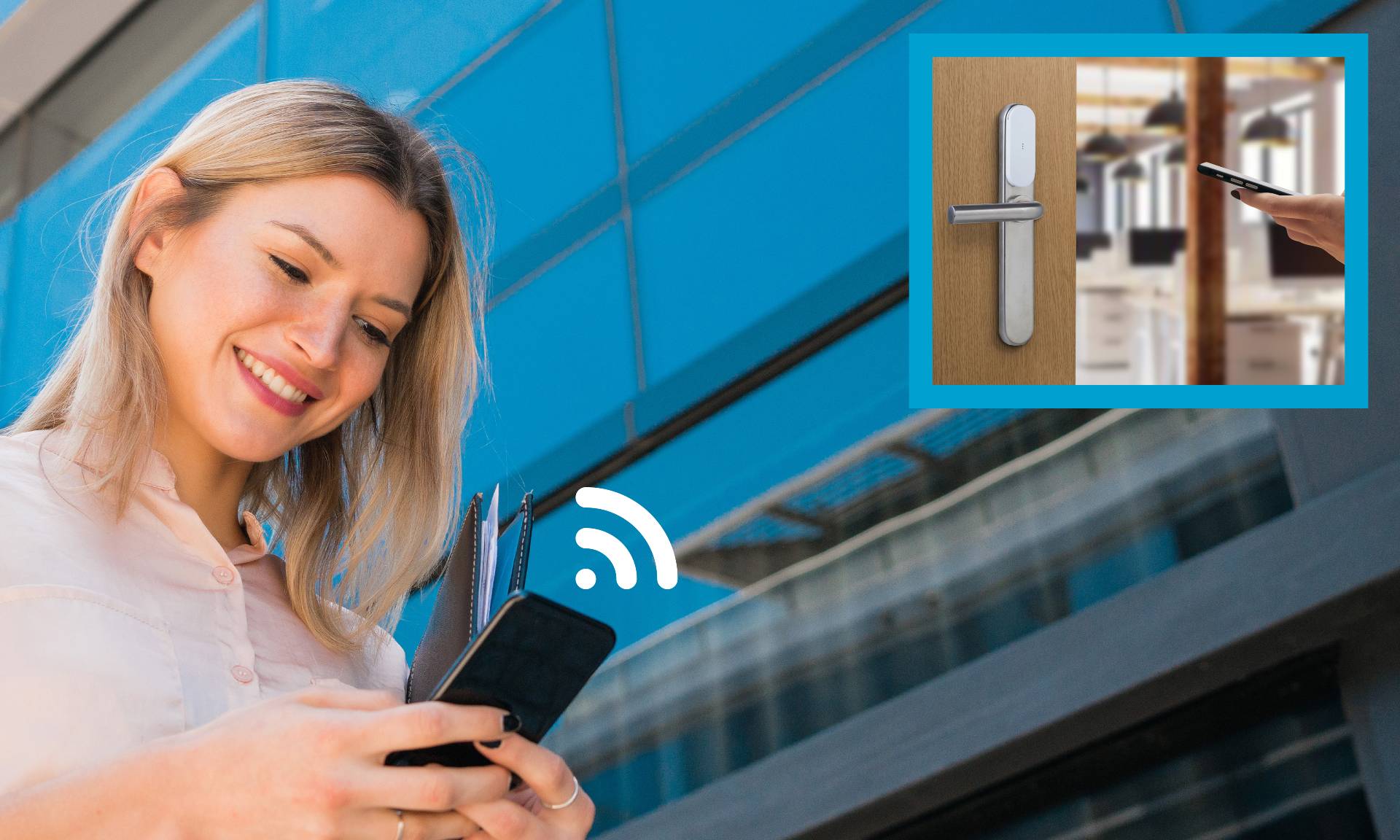The smartphone is changing access control and security management at every scale and level, from global corporations to small companies. Making the switch to mobile access control, however, can seem daunting. Questions may arise around cost, practicality and the potential need for new door hardware. Yet going mobile is actually a lot simpler and quicker than many think, as one new guide explains.
Data from the recent Wireless Access Control Report 2021* suggests almost two-thirds of organizations have already adopted mobile access control, or plan to do so within two years. Industry analysts Omdia estimate that downloads of mobile credentials grew by 220% between 2018 and 2019** alone.
The main benefits of mobile access control, the Report suggests, are convenience, cost and security. All three of these advantages apply for any scale of organization.
Mobile benefits for businesses of every size
The user convenience of replacing plastic key-cards with secure “mobile keys” on a smartphone is obvious. Identical benefits have already brought a mobile-first ethos to banking, travel booking, food delivery and many more sectors.
From a business perspective, too, the option for facilities managers to use their own smart device to issue, amend or revoke an employee’s mobile key brings added flexibility. It frees security staff from the desk and its dedicated admin PC. As our work patterns become fluid — IBM estimates 1.87 billion people will be mobile workers by 2022*** — the ability to get the job done efficiently from anywhere is becoming essential. Access management via smartphone offers this.
Secondly, mobile credentials are simpler and quicker to administer than key-cards, which brings significant cost savings. Deploying mobile keys on employee smartphones removes any need to purchase plastic cards or pay for their printing. Any missing plastic credential needs replacing; cancelling and reissuing a mobile credential is essentially costless. Mobile access control also enables a business to reduce its use of non-recyclable plastics.
Third, the security of mobile credentials improves on traditional card-based access control. More than 17% of respondents to a recent survey admitted losing an RFID card or fob in the previous 12 months****. Such an event obviously threatens site security. How quickly would an employee notice this missing plastic key-card? The survey did not ask, but everyone would notice a missing phone more quickly.
Security managers can react fast when credentials are mobile. Access permissions can be cancelled or amended over the air without any need for updaters, for example. Everything happens instantly inside the credential app.
Even if a missing phone is not spotted quickly, almost every device now has a built-in failsafe: Biometrics, fingerprint or face ID screen-locks, stop any casual thief from using a phone’s mobile keys.
Many misconceptions about mobile access
But what of the challenges of switching standard electronic access control for mobile access — especially for businesses which may not have a large or specialist in-house security team? In truth, if businesses choose the right solution, the challenges of upgrading to mobile keys and access management are far fewer than many imagine.
In many cases, there will be no disruption to existing doors or door hardware, and no drilling at all around the door. Some electronic door locks are compatible out the box with both RFID and mobile credentials. The same reader can be used interchangeably with standard plastic cards and a smartphone. User experience at the door is identical: Just tap or move the phone close a reader to unlock.
In most places, employees can use their own phones. A system offering access via a secure iOS or Android app presents no obstacles to many Bring Your Own Device (BYOD) policies. In the assessment of the recent Wireless Access Control Report 2021, “[t]he move to mobile may not result in any wholesale changes to current lock and reader systems.”
Choosing the right mobile access control
With the right mobile access control system and technology, businesses save the costs involved in replacing lost or damaged credentials. Facilities staff save time previously wasted in handover meetings, getting new or replacement plastic key-cards to the right people.
Mobile access based on a secure app streamlines the process of system management. Updating, revoking or adding new access rights takes place instantly over the air. Many app-based systems offer the ability to store keys for several sites within one secure environment. Keyholders can travel to multiple locations contact-free.
“The Openow® mobile access solution for SMARTair®, for example, enables security managers and site users to manage all their mobile keys from one app,” says Mikel Gaztañaga, SMARTair Sales Manager at ASSA ABLOY Opening Solutions EMEA. “Many businesses have already followed an easy upgrade path to mobile access. SMARTair wireless locks are deployed in buildings and businesses all over the world. The whole system makes switching to mobile simple and cost-efficient. Existing SMARTair systems don’t even need new hardware to upgrade.”
For users, the benefits are clear. The device in their pocket does the job of one or several plastic cards. If they’re carrying their phone, they already have their keys with them — secure, convenient and almost cost-free.
To download a free “Moving to mobile” guide, please visit URL
http://campaigns.assaabloyopeningsolutions.eu/smartair-moving-to-mobile



